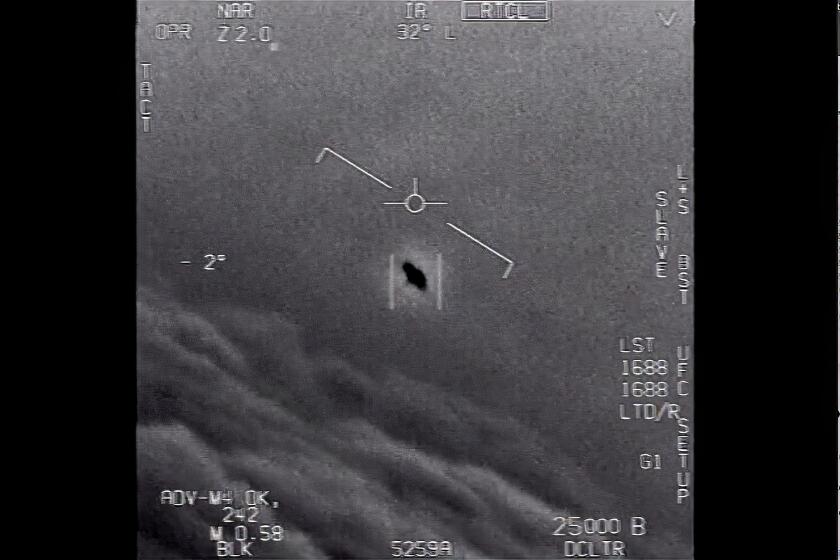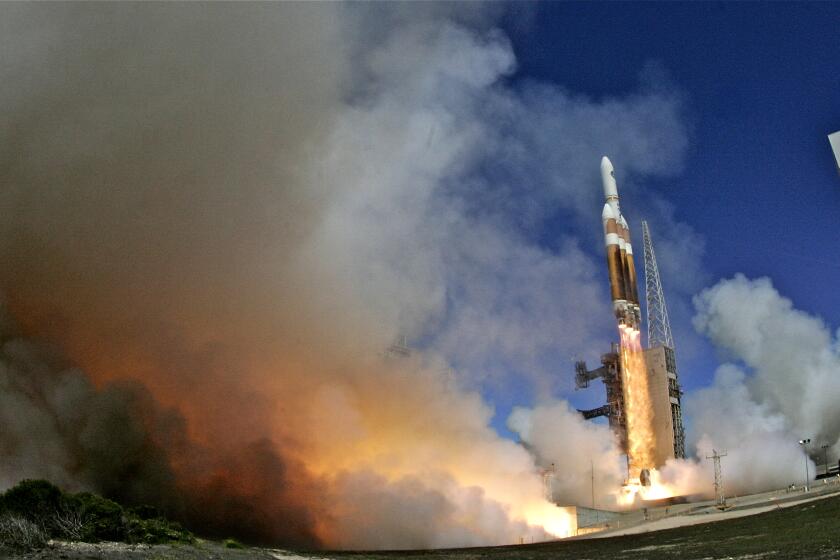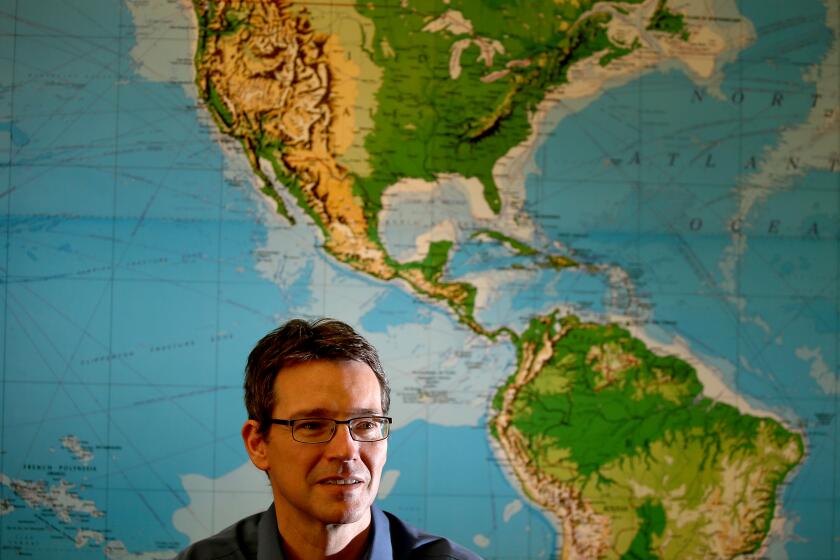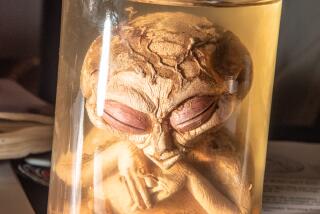NASA says the truth is out there on UFOs. It hired a UAP research chief to find it
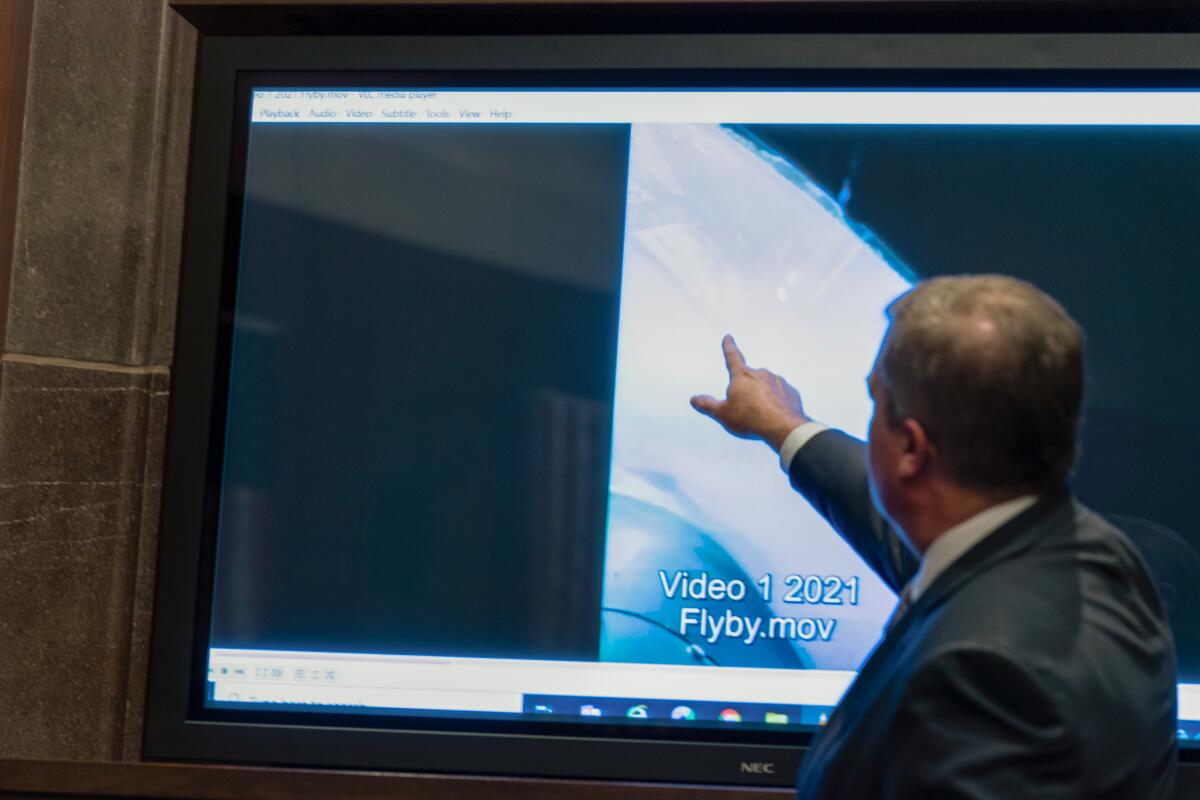
- Share via
NASA’s new official instruction to the U.S. public regarding unidentified anomalous phenomena — the odd things in the sky that used to be called UFOs — boils down to a version of the popular security poster.
“If you see something, say something,” David Spergel, the head of the agency’s UAP study team, said Thursday. And while you’re at it, “collect high-quality data so we can study it.”
Spergel was speaking at an event highlighting his team’s long-awaited final report on the data and methods NASA should use to analyze unusual aerial sightings.
The report outlines NASA’s potential role in the U.S. government’s study of UAPs, an effort led by the Defense Department’s All-domain Anomaly Resolution Office, or AARO. That role will be led by a newly appointed — but unnamed — director of UAP research, the agency said Thursday.
NASA Administrator Bill Nelson addressed the proverbial extraterrestrial elephant in the room.
“The NASA independent study team did not find any evidence that UAP have an extraterrestrial origin,” he said at the event, “but we don’t know what these UAP are.”
The space agency’s goal, Nelson said, was to “shift the conversation about UAP from sensationalism to science.”
NASA is embarking on a new study on unidentified aerial phenomena, or UAPs — the term scientists use instead of UFOs.
Those hoping for confirmation of a broad government cover-up surrounding UFOs likely came away disappointed that the team did exactly what it said it would do.
With a budget of less than $100,000 and only nine months to work, the team delivered a fairly dry document listing technologies already in NASA’s toolbox that could be deployed when investigating unusual observations that defy easy explanation.
“By understanding the nature of UAP, we can ensure that our skies remain a safe space for all,” said Dan Evans, assistant deputy associate administrator for research at NASA’s Science Mission Directorate. “We’re trying to move from conjecture and conspiracy to science and sanity, and you do that with data.”
We’re trying to move from conjecture and conspiracy to science and sanity, and you do that with data.
— Dan Evans, NASA’s assistant deputy associate administrator for research
Commercial and military pilots have reported dozens of odd airborne sightings in recent years that scientists have struggled to explain.
When such reports surface, the panel suggested deploying NASA’s Earth-surveying satellites to evaluate the environmental conditions present at the time.
Understanding the atmospheric, oceanic and other environmental conditions can provide valuable context for an initially inexplicable sight, researchers said.
The panel also suggested some kind of standardized reporting portal that the public can use to log observations of unusual aerial activity. Without a standardized system, data ends up being irregular and incomplete — two adjectives at odds with scientific rigor.
“Most events are going to turn out to be conventional things: balloons, airplanes and so on,” said Spergel, an astrophysicist who serves as president of the Simons Foundation. This is where NASA’s expertise in surveying planetary conditions is useful: “If you want to find a needle in a haystack, you better know exactly what hay looks like.”
Not everyone is convinced aliens are involved. ‘If we had found a UFO, I think the Department of Defense would tell us,’ House Speaker Kevin McCarthy said.
In sidebars, the report profiled a few examples of credible UAP sightings, along with the explanations deeper scientific inquiry revealed.
One is the “GoFast” event, recorded in 2015 by naval aviators on the USS Theodore Roosevelt. Video recorded by a fighter jet’s instruments appears to show an object skimming the surface of the ocean at uncanny speed.
Closer analysis found that the appearance of speed was an optical illusion caused by the plane’s own angle and velocity, the report stated. The light color of the object relative to the sea also indicates that it was colder than the ocean, meaning it had no heat-producing propulsion engine.
Scientists still can’t definitively say what the object is, the report stated. But the evidence suggests that it’s most likely being carried along by the wind rather than maneuvering under its own power.
A red square the size of a football field hovered over Vandenberg Air Force Base in 2003, a former Navy pilot testified last week in Congress.
In a move that seemed at odds with its repeated claims of transparency, the agency declined to release the name of its new UAP chief, citing the scrutiny and harassment that study team members and other staffers affiliated with the subject have received.
The team drew prodigious and often ugly public comments during its nine months of work. Panel members have received online abuse both from people dismissive of any inquiry into UAPs and from those convinced there is more to the UFO story than NASA is willing to tell.
“We take the security of the team very seriously,” Evans said. “That’s in part why we’re not splashing the name of our director out there. Science needs to be free.”
The measured tones of NASA’s representatives seemed unlikely to dampen interest in more sensational interpretations of UAP.
Dispatchers last month received a 911 call from a Las Vegas area resident reporting extraterrestrial life in his backyard, about an hour after local police witnessed an object falling from the sky.
When asked by a reporter to comment on the two mummified forms that a UFO researcher presented to Mexico’s Congress this week, claiming they were 1,000-year-old alien corpses, Spergel responded with a decided lack of enthusiasm.
“This is something I’ve only seen on Twitter, so, it’s, you know,” Spergel said, adding that samples should be made available to scientists for analysis.
Another reporter quizzed Nelson about the July congressional testimony of a former Air Force intelligence officer who insists the U.S. is covering up a decades-old program to reverse-engineer alien spacecraft.
“Whatever he said — where’s the evidence?” Nelson responded.
Are we alone in the universe? Researchers at UCLA are trying to answer this question by asking citizen scientists to analyze signals captured by a giant radio telescope.
Yet the NASA chief also offered what he described as his personal opinion on the existence of extraterrestrial life in the universe, one that is shared by some other astronomers: Though we have no evidence that any of it has contacted us here on Earth, there’s a very real chance that somewhere in the universe is something else we’d classify as life.
“If you ask me, do I believe there is life in a universe that is so vast that it’s hard for me to comprehend ... my personal answer is yes,” Nelson said.
“NASA has a statutory authority to look for life in the universe,” he said. “Whatever we find, we’re going to tell you.”
